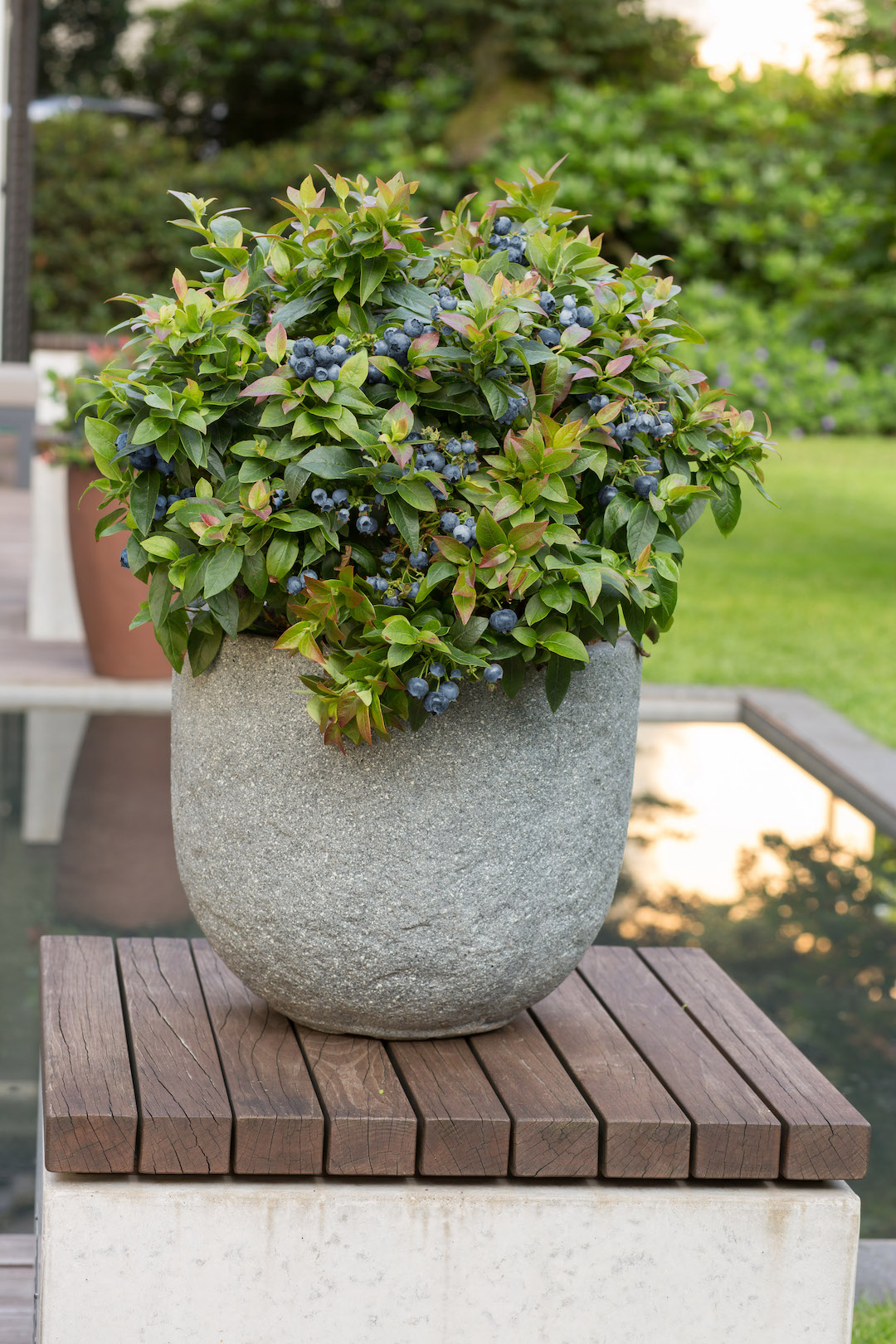Growing Blueberries in Containers
Many gardeners have probably noticed that plants are shrinking. Tiny tomatoes have been around for awhile, but plant breeders have also come up with ways to shrink arborvitae, cucumbers, hydrangeas and goodness knows what else. For small space gardeners, this means more plants in tight places. And, if you love fruit, growing blueberries in containers is now on the table . . . er, the patio.
In the Twin Cities and much of Minnesota, blueberries are tough to grow in the home garden because soils here are more alkaline than acid. For example, my St. Paul garden soil has a pH of 7.3 to 7.8 in all but a small section of the front yard where it’s 5.5, almost acid enough for blueberries, which like a pH of 4.5 to 5.0. (Why so different in the front? My guess is a pine tree lived there for about 80 years before I moved in.) Two types of blueberries are native to Minnesota, mostly in the northeastern part of the state.
The best thing about growing blueberries in containers is that you can control the potting mix you use. There are commercial potting mixes available that are ideal for blueberries—typically the packages will mention things like rhododendrons or azaleas, other acid-loving plants. You can supplement a standard potting mix by adding a fertilizer for acid plants and additional peat or coco coir.

If you are growing in a container, pay attention to the pot size recommendation that comes with the plant. Many container blueberry growers recommend a larger pot because the roots of the blueberries spread horizontally. Blueberries like to be well watered (an inch or two a week) but have good drainage. The University of Wisconsin recommends avoiding black pots because they heat up too much. If you plan to move the pot for winter protection or any other reason, think about how you will do that. (We recommend every gardener have a cart of some kind!)
For the best fruit production, plant two or more varieties of blueberries in containers near each other to allow for cross-pollination. Technically, many varieties are self-pollinating, but you will get better yields with two plants. Plan on covering your containers with netting once the berries arrive to prevent squirrels and other garden marauders from taking your berries.
Which varieties grow best in pots? Here are a few newer and older varieties that are good for container growing.
Jelly Bean blueberry is a new variety that only gets 1 to 2 feet high and produces abundant crops.
Top Hat blueberry grows 2 feet tall and bears lots of large berries in the mid-season.
Northsky dwarf blueberry grows 2 feet tall and 3 feet wide. Be sure to use a large container with this one. It’s great for northern Minnesota gardeners because it can take temperatures down to -45 degrees.
Northblue is a half-high blueberry, meaning it will grow up to 4 feet tall. Hardy to zone 3, but it will need some winter protection, especially in a container. Give this plant a large container.
Peach Sorbet is a zone 5 blueberry designed for containers. As its name implies, the flavor is peachy. It grows to 1 to 2 feet high and wide. Make a plan to protect it during the winter.
Ready to try container blueberries this summer? This video contains a lot of great information about growing all types of blueberries (not just the dwarf ones) in containers.

What do they need for winter protection in Minnesota zone 4?
They are Zone 4 plants, but because they are in a container, you will need to do something to protect it. You may want to put the pot in the ground or a garage or some other shelter. These are new this year — I’ll be trying in my garden, too.
I’m thinking of trying this. I live in southwestern Minnesota. I had an idea to use hog panels as an arch over the pots and then just cover the entire arch with heavy plastic for wintering. Would this be adequate protection?